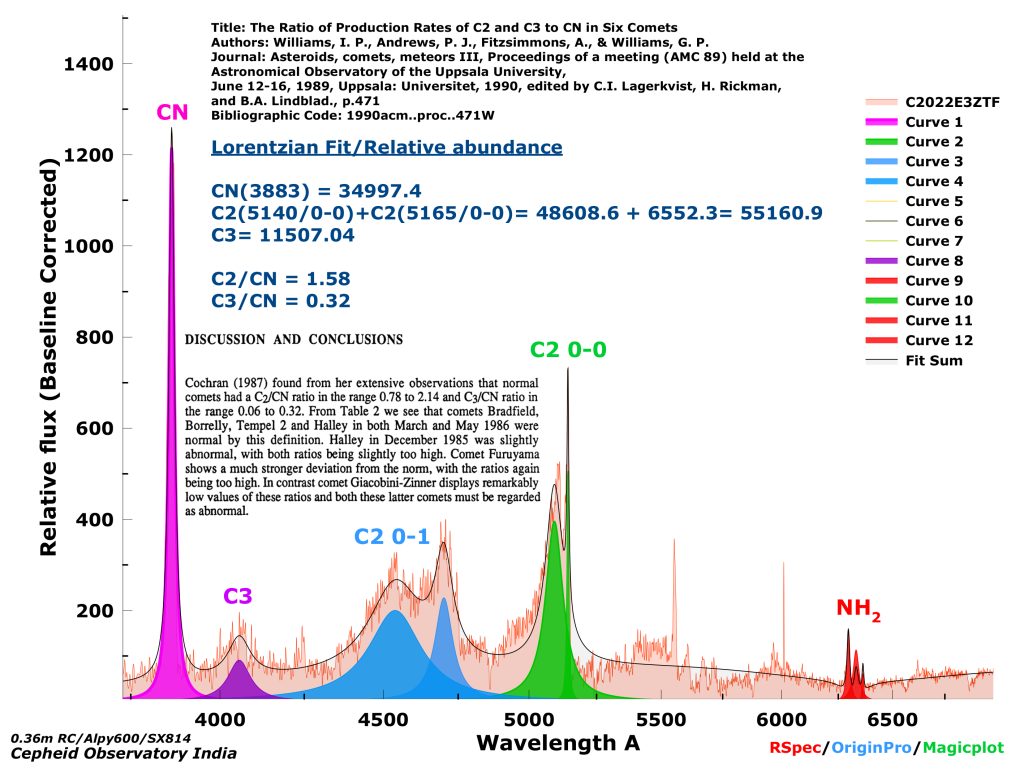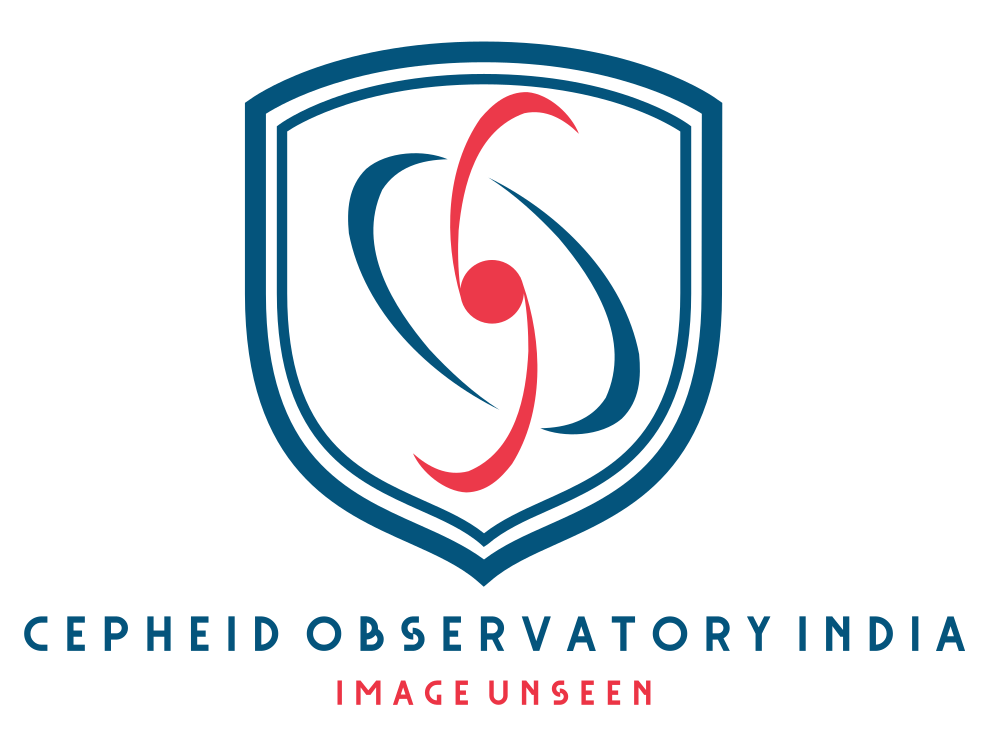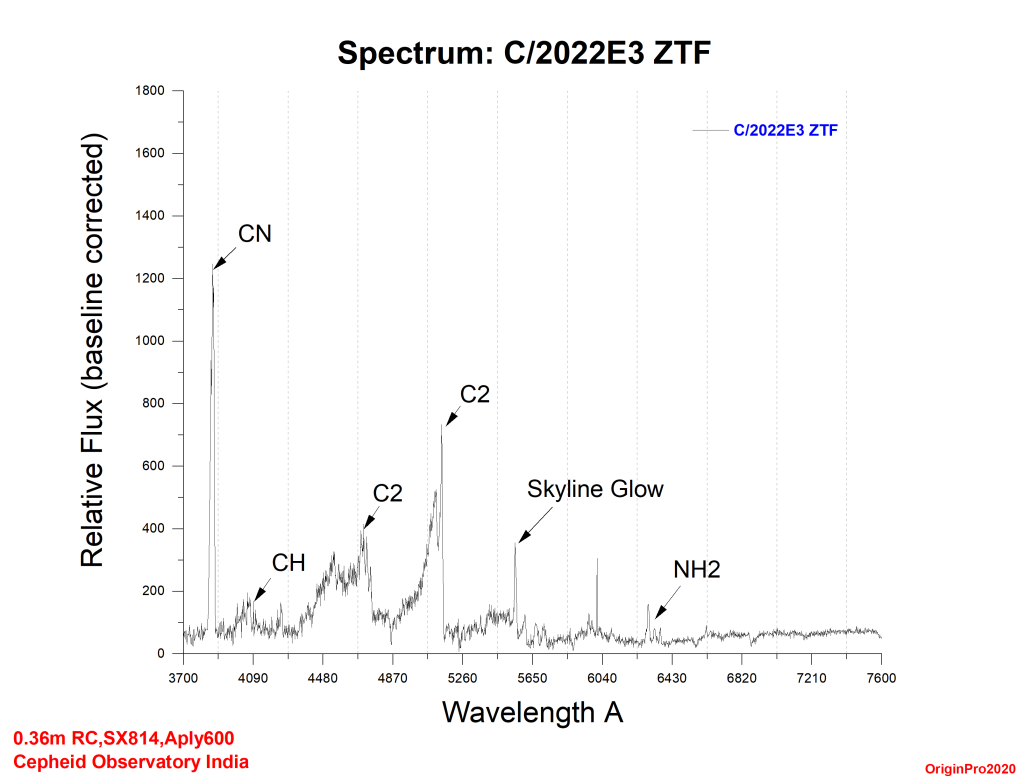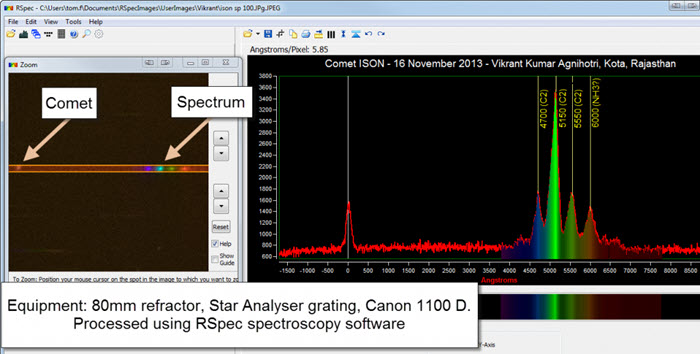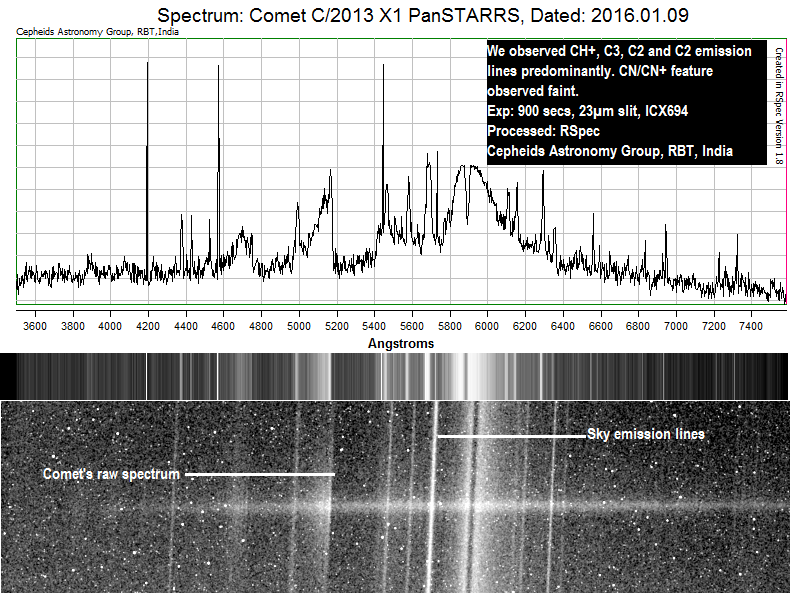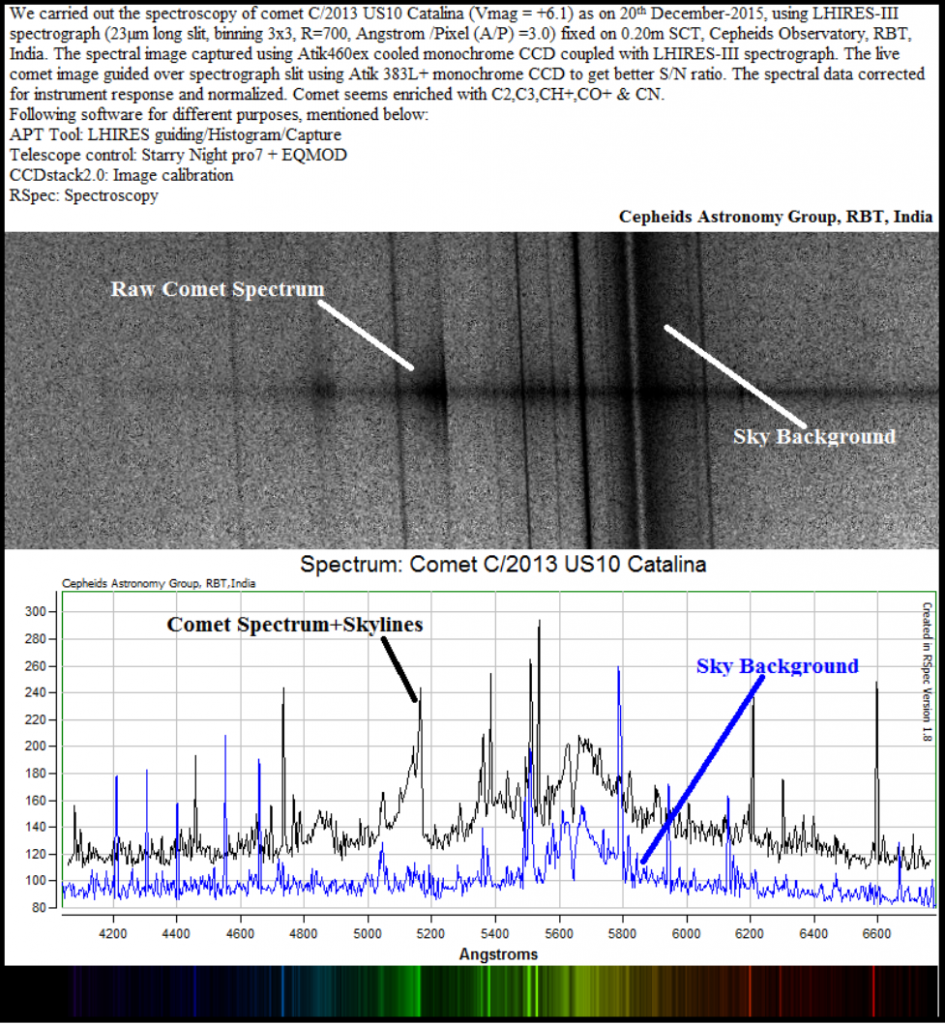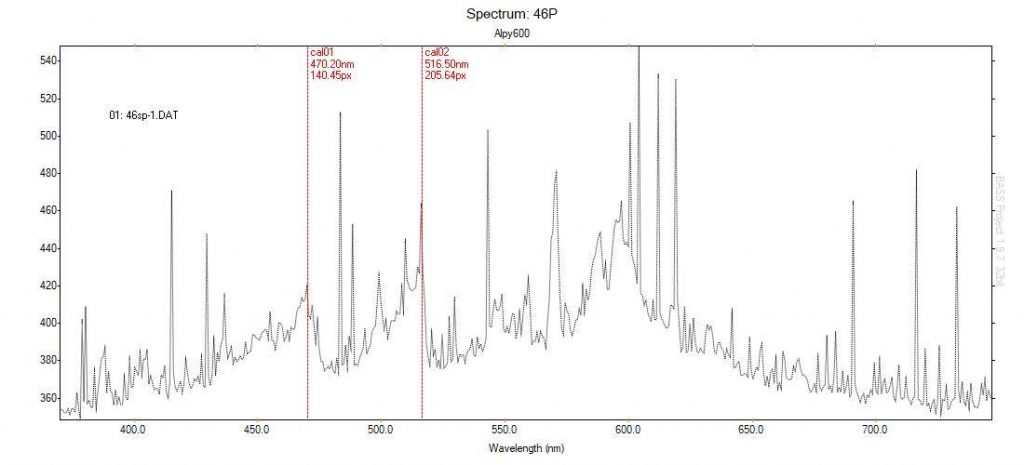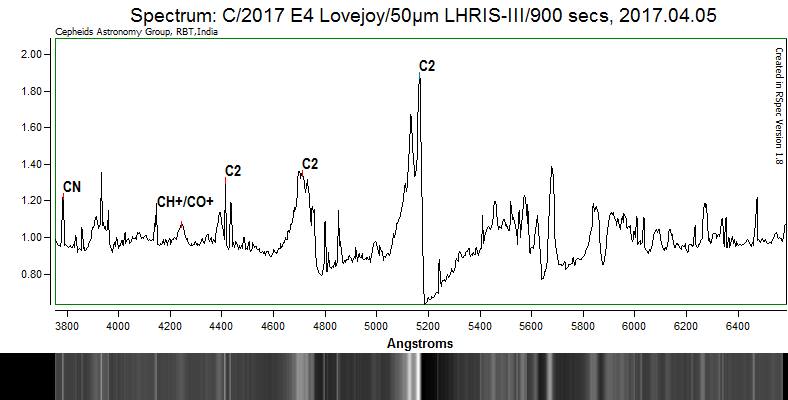We carried out the spectroscopy of comet C/2022E3 ZTF (V mag = +5.7) as on 28th January-2023, using Aply600 spectrograph (23µm long slit, R=700, Angstrom /Pixel (A/P) =1.9) fixed on 0.36m RC. The spectral image captured using SX814 cooled monochrome CCD coupled with Aply600 spectrograph. The image guided over spectrograph slit using Atik 414 monochrome CCD to get better S/N ratio. Comet seems enriched with C2,CH+,NH2 & CN.
The spectral data corrected for instrument response and baseline corrected. We used RSpec and OriginPro2020 for data analysis.
We tried to estimate the relative abundance of C2/C3/CN in comet C/2022E3 ZTF using Lorentz fitting. The area of respective peaks are calculated for C2/C3/CN, We find the results as follows. Figure attached.
Lorentzian Fit/Relative abundance
CN(3883) = 34997.4
C2(5140/0-0)+C2(5165/0-0)= 48608.6 + 6552.3= 55160.9
C3= 11507.04
C2/CN = 1.58
C3/CN = 0.32
The link of supported document / paper is given below.
Title: The Ratio of Production Rates of C2 and C3 to CN in Six Comets
Authors: Williams, I. P., Andrews, P. J., Fitzsimmons, A., & Williams, G. P.
Journal: Asteroids, comets, meteors III, Proceedings of a meeting (AMC 89) held at the
Astronomical Observatory of the Uppsala University,
June 12-16, 1989, Uppsala: Universitet, 1990, edited by C.I. Lagerkvist, H. Rickman,
and B.A. Lindblad., p.471
Bibliographic Code: 1990acm..proc..471W
